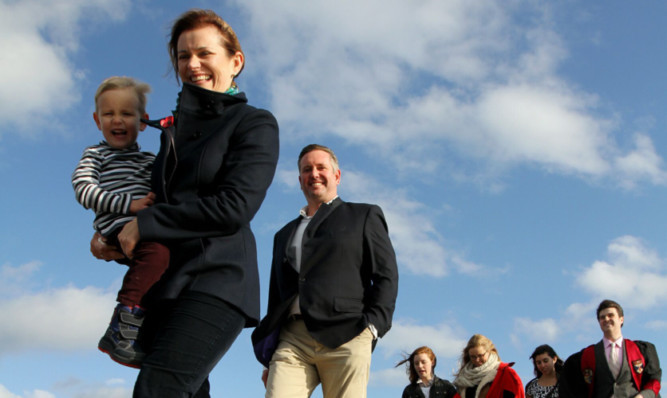The recently-selected rector of St Andrews University has welcomed a decision which could prevent a repeat of the controversy which surrounded her appointment.
The St Andrews Students’ Union has voted in favour of changing the rules surrounding the election of the university rector, after Catherine Stihler MEP was controversially appointed to the role last month.
Although there was no backlash against Ms Stihler being the successful candidate, students had expected an election process with the option to vote for “re-open nominations” (RON) if they did not like any of the candidates.
Because Ms Stihler was the only nominee, however, she was appointed automatically in line with the university’s regulations.
This led to a section of the student population raising concerns about the “lack of a democratic process”.
Now, following a petition that was signed by 67 students, the Students’ Representative Council (SRC) the group that decides the union’s policies has unanimously resolved to pressure the university to allow a RON option.
This will involve student representatives raising the issue at the next meeting of the university’s academic council, which sets the rules. But matters could be complicated by the strict window in which the rector elections can be held.
The university is limited by law to running the process in October or early November, which would only just allow enough time for one repeat election in the event that students voted for RON.
The SRC, therefore, also voted in favour of lifting this restriction, which requires asking the university’s top governing body the University Court to make a formal proposal to the Scottish government.
If approved, the proposal would then be forwarded to the Privy Council in London, where the law could be changed.
Ondrej Hajda, the director of representation at the students’ union, warned during the debate that the uncertain political climate in Scotland meant this could potentially take years.
Ms Stihler told The Courier: “I back the SRC’s decision. It is a real pity no one else decided to stand on this occasion.”
Fourth-year history student Ali West, a former gender equality officer with the SRC, who coorganised the petition, said they were pleased with the support it received.
‘We have to try’
In the end, the motion passed with few surprises, writes Elliott Davies, former editor of The Saint student newspaper.
Wrapping up half an hour of discussion, Pat Mathewson, the student president, summed up the feeling in the room: “We have to try.”
The biggest problem now facing the students’ union is that it has very little control over the matter.
The process of selecting a new rector is governed by the university, so the best that student representatives can do is make their case for a RON option and hope for the best.
With that said, the chances are good.
The prevailing mood among 8,000 students is that the status quo is not acceptable and the new rector agrees; the university surely must listen.
Mostly, it will just take time. The top university bodies meet only a few times a year and enlarging the election window will require changes to the law.
The election process won’t be fixed overnight but then we do have three years.
